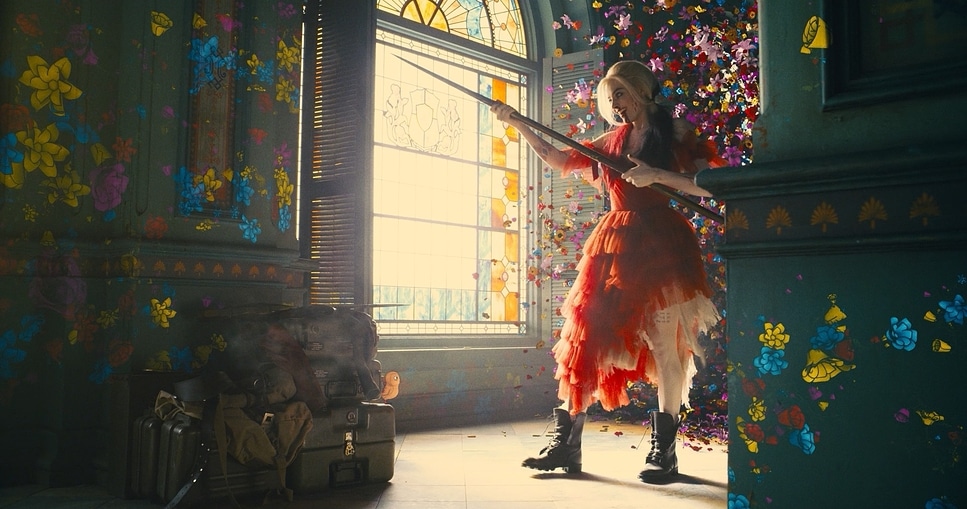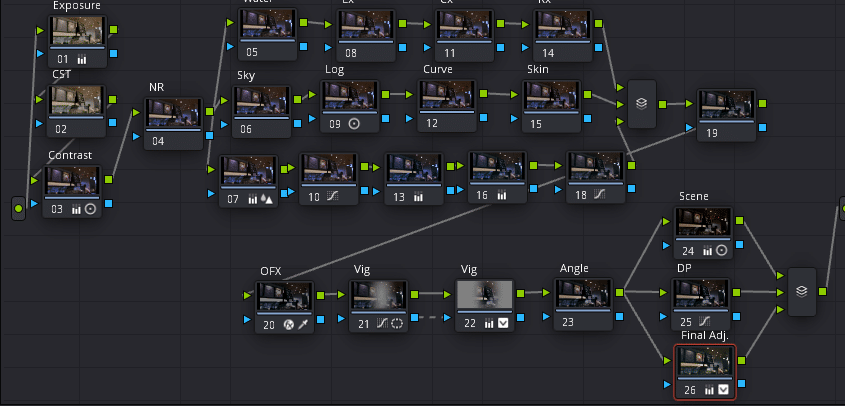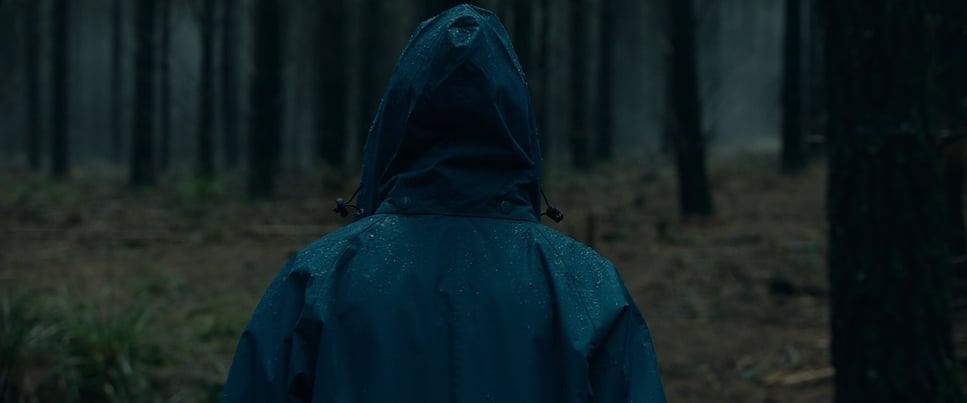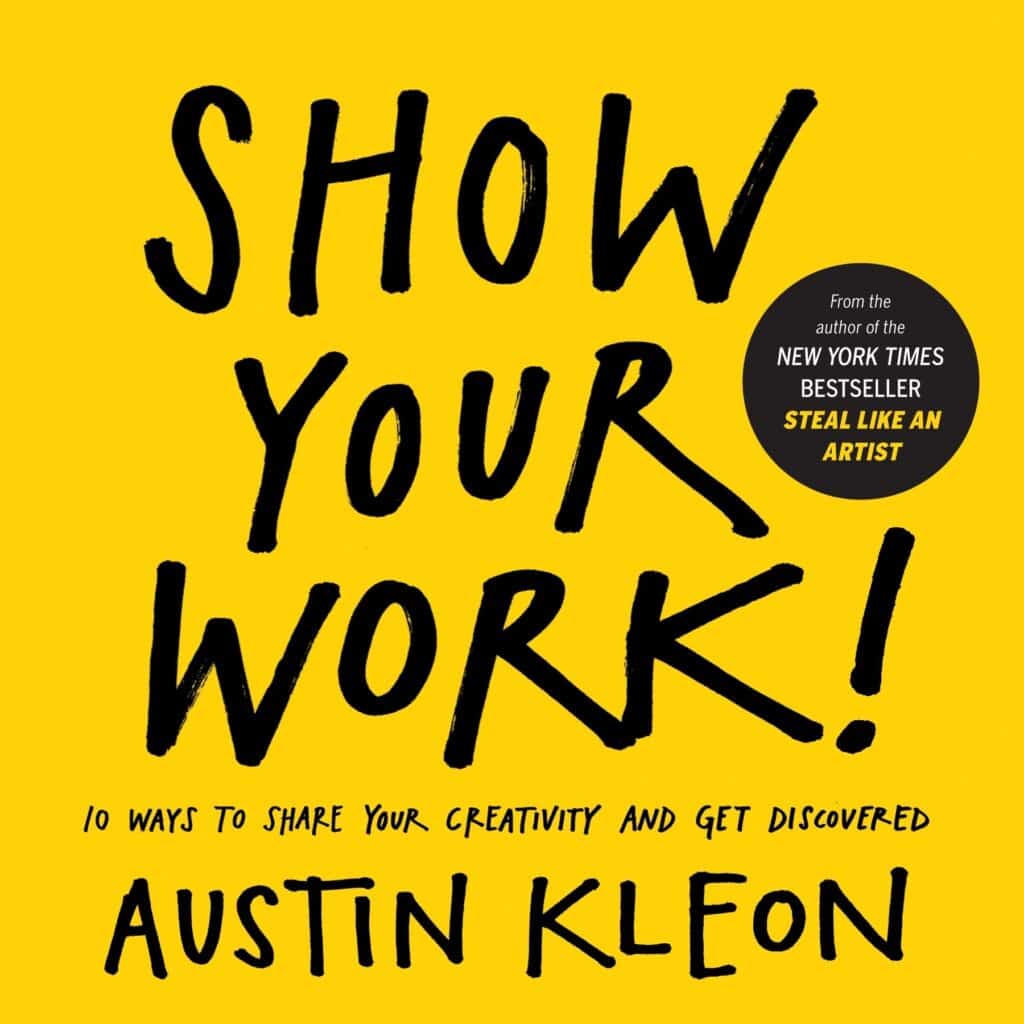I’ve been working for clients for these past few months as a Film Colorist and I learned a lot about this profession. Trust me when I say that it takes more than just mastering DaVinci Resolve or Baselight.
Becoming a professional film colorist requires a person to enhance their creativity, technical, and communication skills. If you’re a freelancer, let’s add marketing skills.
Let’s start with creativity.
Creativity
The director or DP will give you instructions on the look they want but it still requires your creativity.
Why?
It’s because there are a lot of things to consider after they give their instructions. For example, the director may say that he wants the red to pop out and the scene should be bright.

It’s your job to create looks that will look good and cohesive with those requirements. Here are some questions you need to answer by yourself:
- Should you create a bright stylized look with red popping out?
- Should you do sky replacements?
- Should the film have a vintage vibe?
- Should the blacks be milky?
- Should we add green undertones to compliment the poppy red?
- How far should the contrast go?
- How to make the subjects pop out in every scene?
After that, you go to the director and they will choose the best for their vision. Most of the time they won’t even know what things you did to come up with certain looks. They will just say something like “This feels like it!” or “A little more saturation on this one and this will be perfect.”
When they say “a little more saturation”, it may not really mean moving your saturation bar to the right. Sometimes I just pull my Gamma or Midtones lower and it does the job. It’s because the director may want more punch into it so lowering the gamma wheel does a better job than adding saturation.
You cannot go ask the director all the things above. If he knows, you shouldn’t be having the job right now.
I had this project where the only thing the director wanted was that the film should go darker as it progresses and for the greens should pop out. I had to do several decisions along the way.
There were times when he already said that he is very happy with the grade but I wasn’t. If you’re an experienced colorist, you’re going to have days when you see the look you did last night and you’ll ask yourself “What was I thinking? This looks disgusting!”
That happened to me after submitting my work and I told the client that if we have more time, I’d like to make some revisions and improvements. He was more than happy to hear that. He said that he was not in a rush so I can do it.
Of course, on my part, it’s also a win. I wouldn’t want to produce a bad grade because I will be in the credits. More of this is in the marketing section below.
Technical
Like a musician, it’s not enough to just have the talent of creating music. You need technical skills to turn the music in your head into something people can listen to.
For example, you decided on playing the guitar for it. Now, you need to know strumming patterns, guitar chords, tuning your guitar, etc.

I see no difference with color grading. It’s both challenging to learn. I found guitar more difficult though. Because in color grading once you’ve learned what each tool does, you can start creating basic grades.
You can learn it on Youtube or you can take a course.
There are a lot of courses out there, but the most effective one for me is Waqas Qazi’s Freelance Colorist Masterclass. There is no other course that shows you how to become a professional colorist from zero to hero.
You might be tempted to learn this on your own. After all, you can just do trial and error to create looks that feel right.
Before taking that course, I was learning by myself too. I really thought I was doing a great job. For more than a year, I was color-grading my own films with my self-taught knowledge.
Then, I took the course because I realized that I’m missing something in my grades.
After taking his course, I discovered that it’s not missing something. My grades were horrible and there are a lot of mistakes. One of them is shot matching. I never put that much attention to shot matching. But, Qazi has shown how critical it is to perfectly match scenes.
Also, my films had a lot of overcasts which I wasn’t seeing before taking the course. This is exactly what “You don’t know what you don’t know.” means.
Having a mentor will tell you things that you didn’t know that you should know. It’ll also speed up your growth exponentially.
I learned way more in the course than in 2 years of self-studying.
I’ve learned all the functions in Youtube and DaVinci Resolve’s free training. I mastered how to use them. But, it’s different when a mentor teaches you because he’ll teach you not just what a tool is for.
He’s going to teach you how to use that tool to reach a certain goal. For example, I’ve learned what the primary and log wheels are.
So, I knew that moving the gain wheel to a certain color causes the brightest parts of the image to go in that color. You can also adjust the brightness using it.
It was only in the course that I learned about using that exact same wheel to balance images, make the highlight roll-off look better, create a more cinematic vibe by moving gamma and gain to complementary directions, etc.
Without the course, I doubt that I will ever search for those terms in my entire life.
I cannot express enough how much you need to take courses to level up your color grading skills, especially in the technical aspect of it.
Communication
One of the challenges is talking with directors and cinematographers about their vision. Tashi Trieu, the colorist of Avatar 2, said in his interview when asked about working with James Cameron:
Having said that, you know, most directors will not be able to communicate their thoughts clearly. You may think that you completely understand but you’ll be surprised that most of the time only 50% was clearly communicated.
I had a client where the client told me that the night scene should feel like the moon is the source of light and is beaming toward them. That was exactly what the previous client told me so I created a blue night scene where it feels like the moon’s beam is blue.
But this client wanted a reddish color that, to me, feels like they’re inside an oven.
Different people have different experiences, interpretations, biases, etc. It’s your job as a colorist to make things clear right before you start. You don’t want to waste your time and effort creating and matching looks that will just be turned down because that wasn’t “it”.
The trick here is to always ask for a reference file and describe what you see in the reference file.
For example, I had a client who wanted something gothic, dark, and dangerous forest.
In my mind, I had something like this:

But the client’s reference was this:

If I had not asked for a reference, I would’ve created a look that I will have to entirely revise. I asked the client what, in particular, in the reference he wants. He said the overall feeling it gives.
I created something close to his reference but a bit less contrasty and with a bit more brown branches and he said that I nailed it.
One thing to remember is that you don’t have to exactly match the reference. There are just one or 2 things that the director loves about it. If I had exactly matched the look to the reference the film would look unreal a bit like a computer game.
If the director insists, then go for it. But, I would still try to show him the looks that I feel best for the film and explain my thoughts on it.
If you can create a really great-looking grade that matches his requirements, the director will most likely agree with you.
After all, if he hired you, he’s impressed with your work and will definitely listen to you.
Marketing
No matter how awesome your grade is, if nobody knows about it, you’ll not get hired. You need to learn marketing yourself. In the book Show Your Work by Austin Kleon, I’ve learned that social media is best used by sharing, not what your meal is today, but what your current projects are.

I started transforming my Instagram as a marketing tool by regularly posting stills or clips of what I graded.
We are so lucky that we live in this era. We can start a business and let it be known for free. Back in the day without the internet, you’ll have to pay a fortune for televisions, radios, and newspapers for your product or service to be known.
And the great thing is color grading is something you can do in your Pajamas. If you’re going to put effort into marketing your skills, it’s impossible to not get any clients.
The demand for color grading is getting higher. Music videos, commercials, and even documentaries are professionally graded. It’s not just Feature Films that are being graded right now. There was even a Youtube Channel owner that asked for a quote on grading a Youtube video with just her kids playing.
This is the best time to take a share in the demand in this business. Just put in the work in your skills and in marketing, and you’ll be making good money in color grading for clients.
In the course I recommended above, he will teach you exactly how to market yourself as a colorist. That course is actually a 3-in-1 course. You’ll learn how to deal with clients, color grade, and market yourself as a professional.
He will also show you the exact process of how he approaches producers, directors, etc., and how he maximized social media.
Conclusion
The first 3 things are necessary for becoming a professional colorist for a company with its own marketing team. But, if you’re a freelancer, you need to learn marketing. I don’t recommend freelancing websites like Upwork because they take a huge cut from your income and there are way more clients you can find outside those websites.
There are a lot of new colorists that are crushing it! If they can do it, you can do it too. Just follow the things I mentioned above and you’re on the right track.